
A nuclear-powered icebreaker is a nuclear-powered ship, purpose-built for use in waters covered with ice. While nuclear-powered icebreakers have been considered or planned by other countries, the only country that has built and operated them as of 2022 is Russia. Nuclear-powered icebreakers were constructed by the Soviet Union and later Russia primarily to aid shipping along the Northern Sea Route in the frozen Arctic waterways north of Siberia. Nuclear-powered icebreakers are much more powerful than their diesel-powered counterparts. Although nuclear propulsion is expensive to install and maintain, very heavy fuel demands, limitations on range, and difficulty refueling in the Arctic region can make diesel vessels less practical and less economical overall for these ice-breaking duties.

Kapitan Dranitsyn is a Russian icebreaker, built in Finland for the former Soviet Union. Since October 1995 she has been used as a research vessel by AARI. She also offers excursions in the Arctic Ocean north of Russia.

Aurora Australis was an Australian icebreaker. Built by Carrington Slipways and launched in 1989, the vessel is owned by P&O Maritime Services. It was regularly chartered by the Australian Antarctic Division (AAD) for research cruises in Antarctic waters and to support Australian bases in Antarctica.
MS Expedition is an expedition cruise ship owned and operated by the Canada-based G Adventures. She was built as a car/passenger ferry in 1972 by Helsingør Skibsværft og Maskinbyggeri A/S, Helsingør, Denmark as Kattegat for Jydsk Færgefart A/S. Subsequently, she sailed under the names nf Tiger for P&O Normandy Ferries, Tiger for Townsend Thoresen and Ålandsfärjan for Viking Line, prior to conversion into a cruise ship in 2008. The MS Expedition has the IMO number 7211074 and is ice-strengthened, having an ice class of 1B. There are two higher classes, being 1A Super and 1A.

Polar Star Expeditions was a specialty adventure cruise company owned by Karlsen Shipping Company Ltd. out of Halifax, Nova Scotia, Canada. In 2001, Polar Star began operating a single expedition cruise ship, MV Polar Star, a 87-metre (284 ft) converted Swedish icebreaker with 105 berths. The company conducted cruises mainly in the northern and southern polar and sub-polar regions. Polar Star Expeditions did not have an easy time of it. In 2010, its only vessel lost one of its engines and had to operate part of that season on just one. Then in January 2011, the vessel suffered serious grounding damage in the Antarctic, which led to the failure of the parent company.
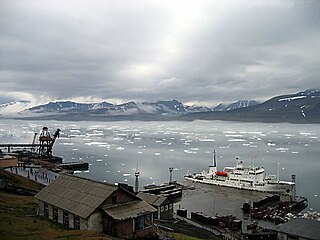
Professor Molchanov is a Russian ice-strengthened oceanographic research vessel. The ship was built in Finland in 1983 and is now converted to passenger duties for the expedition cruise market.
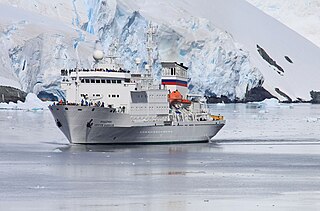
The Akademik Sergey Vavilov is a Russian research vessel, named after physicist Sergey Vavilov. She was completed on 12 February 1988, at the Hollming Yard in Rauma, Finland for the Soviet Union. Akademik Sergey Vavilov started operations as a research vessel of Shirshov Institute of Oceanology of the USSR Academy of Science in the USSR on 20 March 1989, and prior to 7 November 1999, completed five research cruises into Norwegian Sea, North Atlantic Ocean and South Atlantic Ocean.

50 Let Pobedy is a Russian Arktika-class nuclear-powered icebreaker.
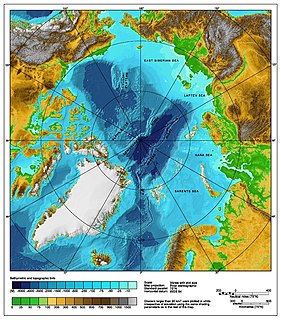
Arktika 2007 was a 2007 expedition in which Russia performed the first ever crewed descent to the ocean bottom at the North Pole, as part of research related to the 2001 Russian territorial claim, one of many territorial claims in the Arctic, made possible, in part, because of Arctic shrinkage. As well as dropping a titanium tube containing the Russian flag, the submersibles collected specimens of Arctic flora and fauna and apparently recorded video of the dives. The "North Pole-35" manned drifting ice station was established.

Xue Long is a Chinese icebreaking research vessel. Built in 1993 at Kherson Shipyard in Ukraine, she was converted from an Arctic cargo ship to a polar research and re-supply vessel by Hudong-Zhonghua Shipbuilding of Shanghai by the mid-90s. The vessel was extensively upgraded in 2007 and 2013.

Polar Class (PC) refers to the ice class assigned to a ship by a classification society based on the Unified Requirements for Polar Class Ships developed by the International Association of Classification Societies (IACS). Seven Polar Classes are defined in the rules, ranging from PC 1 for year-round operation in all polar waters to PC 7 for summer and autumn operation in thin first-year ice.
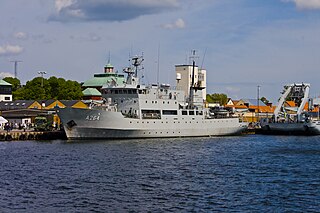
HSwMS Trossö (A264) is an auxiliary ship in the Swedish Navy. She was built in Finland for the Soviet Navy as an Akademik Shuleykin-class ice-strengthened patrol craft tender, launched in 1984 as Arnold Veymer and renamed Livonia in 1991. Her sister ships were Akademik Shuleykin, Akademik Gamburtsev, Professor Molchanov, Professor Multanovskiy, Geolog Dmitriy Nalivkin, Professor Polshkov, Professor Khromov and Akademik Shokalskiy.

RCGS Resolute is a five-star ice-strengthened expedition cruise ship built in 1991 by Rauma shipyard in Finland. She was originally named Society Adventurer, but after Discoverer Reederei was unable to take delivery of the vessel due to financial troubles, the completed ship was laid up at the shipyard for almost two years. In 1993, she was acquired by Hanseatic Tours and renamed Hanseatic. In 2018, she was chartered to One Ocean Expeditions and given her current name.

MS World Discoverer was a cruise ship designed for and built by Schichau Unterweser, Germany in 1974. During construction called BEWA Discoverer, the ship was completed in Bremerhaven, Germany. In 2000, the ship struck an underwater obstacle and was damaged; it was subsequently grounded – to prevent sinking – and abandoned in the Solomon Islands.

MV Akademik Shokalskiy is an Akademik Shuleykin-class ice-strengthened ship, built in Finland in 1982 and originally used for oceanographic research. In 1998 she was fully refurbished to serve as a research ship for Arctic and Antarctic work; she is used also for expedition cruising. She is named after the Russian oceanographer Yuly Shokalsky.

The Akademik Shuleykin- class vessels are Finnish-built ice-strengthened ships built for the USSR. They were originally used for oceanographic research; currently several have been converted for tourism in Arctic/Antarctic waters, carrying approximately 50 passengers.
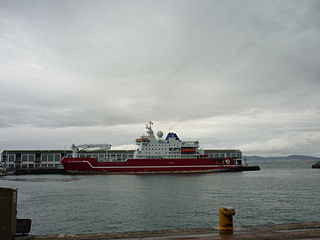
S. A. Agulhas II is a South African icebreaking polar supply and research ship owned by the Department of Environmental Affairs (DEA). She was built in 2012 by STX Finland Rauma shipyard in Rauma, Finland, to replace the ageing S. A. Agulhas, which was retired from Antarctic service in April 2012. Unlike her predecessor, S. A. Agulhas II was designed from the beginning to carry out both scientific research and supply South African research stations in the Antarctic.

Vitus Bering is a Russian icebreaking platform supply and standby vessel owned by Sovcomflot. Built by Arctech Helsinki Shipyard in Helsinki, Finland, she and her sister ship, Aleksey Chirikov, were ordered on 16 December 2010, shortly after the joint venture agreement between STX Finland Cruise Oy and United Shipbuilding Corporation had been signed. Delivered to the owners on 21 December 2012, Vitus Bering will be used in the Arkutun-Dagi offshore oil field in the Sea of Okhotsk.

MSV Nordica is a Finnish multipurpose icebreaker and offshore support vessel. Built in 1994 by Finnyards in Rauma, Finland and operated by Arctia Offshore, she and her sister ship Fennica were the first Finnish icebreakers designed to be used as escort icebreakers in the Baltic Sea during the winter months and in offshore construction projects during the open water season.
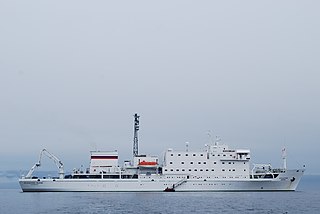
Akademik Ioffe is a research vessel, named after the Soviet physicist Abram Fedorovich Ioffe.



















